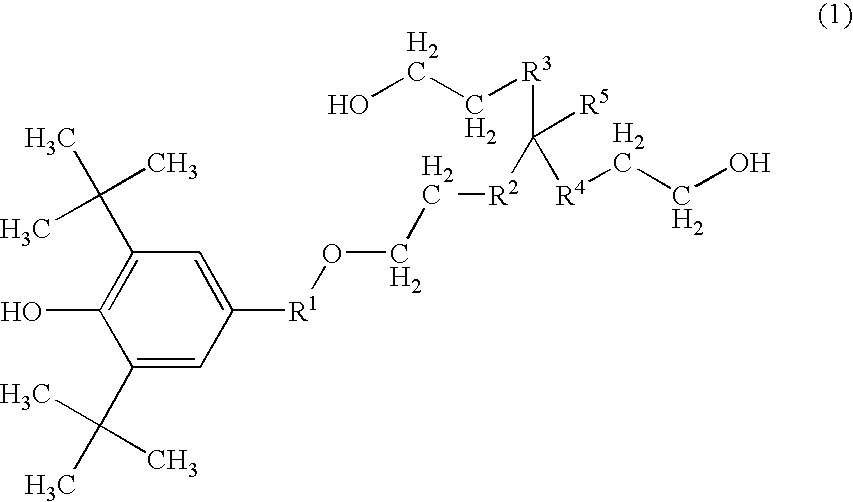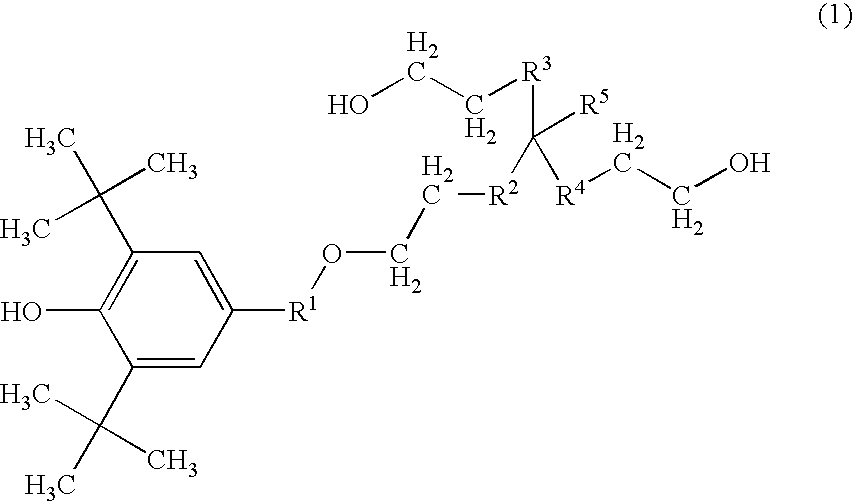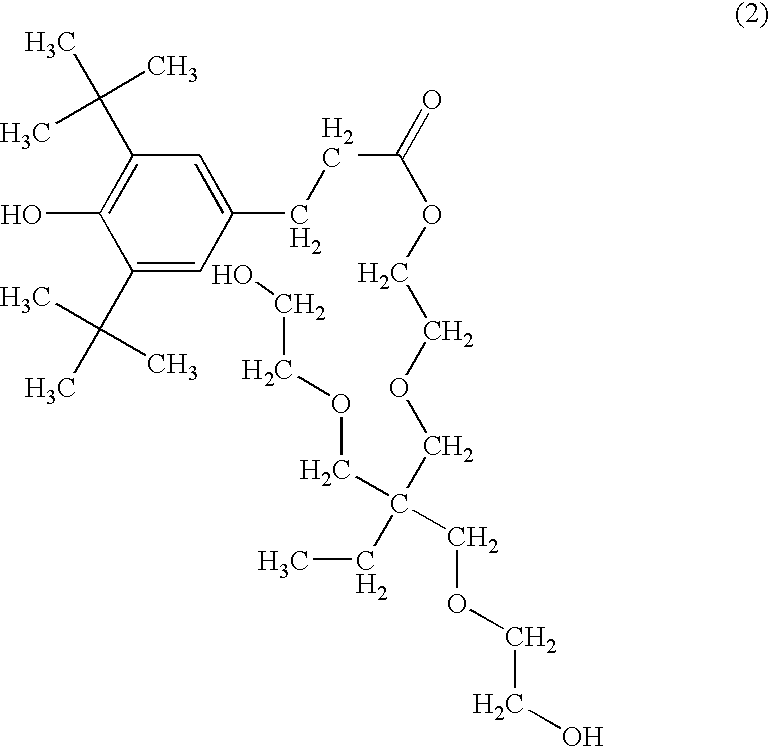Resin with function of oxidation inhibition and emulsion thereof
a technology of oxidation inhibition and emulsion, which is applied in the field of emulsion, can solve the problems of reducing molecular weight, sedimentation of antioxidants with lapse of time, and decreasing strength, and achieves excellent light resistance, excellent alkali resistance, and excellent dispersibility in emulsions.
- Summary
- Abstract
- Description
- Claims
- Application Information
AI Technical Summary
Benefits of technology
Problems solved by technology
Method used
Image
Examples
example 1
[0045]In a glass made flask equipped with a condenser tube, a nitrogen introduction tube, a dropping funnel, a thermometer, and a stirrer were charged 163.78 parts by weight of acetone and 263.18 g of isophorone diisocyanate, and while stirring in a nitrogen atmosphere, 343.74 parts by weight of the antioxidant (A) represented by the formula (2) [CHINOX528 (manufactured by CHITEC CEMICAL)] was dripped to the resultant. The temperature of the flask was elevated to 65° C. and the reaction was performed for 2 hours. Then, 48.19 parts by weight of dimethylolbutanoic acid (DMBA) was charged and farther 0.30 parts by weight of dibutyltin dilaurate was charged, and the reaction was continued for additional 10 hours to synthesize a prepolymer. The NCO concentration at the time when the reaction was completed was 0.492 mmol / g (theoretical NCO concentration: 0.484 mmol / g) and the prepolymer had a number average molecular weight of 4,000 and a weight average molecular weight of 8,000 by gel pe...
example 2
[0047]In a glass made flask equipped with a condenser tube, a nitrogen introduction tube, a dropping funnel, a thermometer, and a stirrer were charged 163.78 parts by weight of acetone and 264.41 g of isophorone diisocyanate, and while stirring in a nitrogen atmosphere, 347.41 parts by weight of the above-mentioned antioxidant [CHINOX528] was dripped to the resultant. The temperature of the flask was elevated to 65° C. and the reaction was performed for 2 hours. Then, 43.30 parts by weight of dimethylolpropionic acid (DMPA) was charged and farther 0.30 parts by weight of dibutyltin dilaurate was charged, and the reaction was continued for additional 10 hours to synthesize a prepolymer. The NCO concentration at the time when the reaction was completed was 0.495 mmol / g (theoretical NCO concentration: 0.484 mmol / g) and the prepolymer had a number average molecular weight of 4,000 and a weight average molecular weight of 8,000 by gel permeation chromatography.
[0048]Then, 28.65 parts by ...
PUM
 Login to View More
Login to View More Abstract
Description
Claims
Application Information
 Login to View More
Login to View More - R&D
- Intellectual Property
- Life Sciences
- Materials
- Tech Scout
- Unparalleled Data Quality
- Higher Quality Content
- 60% Fewer Hallucinations
Browse by: Latest US Patents, China's latest patents, Technical Efficacy Thesaurus, Application Domain, Technology Topic, Popular Technical Reports.
© 2025 PatSnap. All rights reserved.Legal|Privacy policy|Modern Slavery Act Transparency Statement|Sitemap|About US| Contact US: help@patsnap.com



